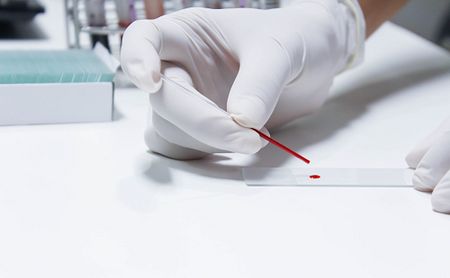3-OMD Levels in Dried Blood Spots May Help to Diagnose AADC Deficiency

Measuring 3-O-methyldopa (3-OMD) levels in dried blood spots could help in diagnosing aromatic L-amino-acid decarboxylase (AADC) deficiency, a recent study suggests.
This approach would be less invasive for patients, who often undergo multiple lumbar punctures before a final diagnosis, and could be used to screen for the disease in newborns.
The study “Evaluation of 3-O-methyldopa as a biomarker for aromatic L-amino acid decarboxylase deficiency in 7 Brazilian cases” was published in the journal Molecular Genetics and Metabolism Reports.
AADC deficiency is caused by a mutation in the DDC gene, which contains the instructions for the AADC enzyme. AADC is necessary for the production of the chemicals — or neurotransmitters — dopamine and serotonin in the brain. Both these chemicals play a key role in nerve cell communication.
Without a functional AADC enzyme, dopamine precursors like L-Dopa accumulate inside cells. L-Dopa is then broken down and chemically transformed into 3-OMD, which is also elevated in patients.
Diagnosing AADC deficiency currently relies on measures of AADC activity and on the biochemical profile of a patient’s cerebrospinal fluid (CSF), the liquid that surrounds the brain and spinal cord. But this liquid is collected via a lumbar puncture, an invasive procedure, and needs to be shipped frozen to specialized labs.
The levels of 3-OMD can be measured in several easily obtainable body fluids, like urine, plasma and dried blood spots, the latter essentially being drops of blood collected on filter paper. All are also more amenable to being transported to reference labs.
A group of researchers in Brazil assessed the value of 3-OMD, analyzed on dried blood spots, as a potential biomarker for the diagnosis of AADC deficiency.
Examined dried blood spots came from seven patients with AADC deficiency (mean age, 7.8 years), 35 non-AADC deficiency individuals (mean age, 23.2 years), who served as controls, and 22 newborns.
All AADC patients had been previously diagnosed using standard methods, including a genetic test that confirmed a mutation in the DDC gene. They all had severe lack of muscle tone, oculogyric crisis (involuntary eye movement) and problems with the autonomic system.
Analysis showed 3-OMD levels in dried blood spots were significantly elevated — at least four times higher — in AADC patients (3.308 nanograms per milliliter, ng/mL) compared with both controls (mean 20 ng/mL) and newborns (mean 98 ng/mL).
One patient, who was taking L-DOPA to ease disease symptoms, had much higher levels (12,302 ng/mL) than the others due to this treatment.
Overall, “we have validated a very sensitive and fast method for the quantification of 3-OMD that can shorten the long diagnostic odyssey faced by patients with AADCD [AADC deficiency] in a less invasive manner than having a lumbar puncture performed,” the researchers wrote.
This method could also be used for the screening of AADC deficiency in newborns, “which can provide an early diagnosis and a more realistic disease incidence, not influenced by underdiagnosis and misdiagnosis,” they concluded.






